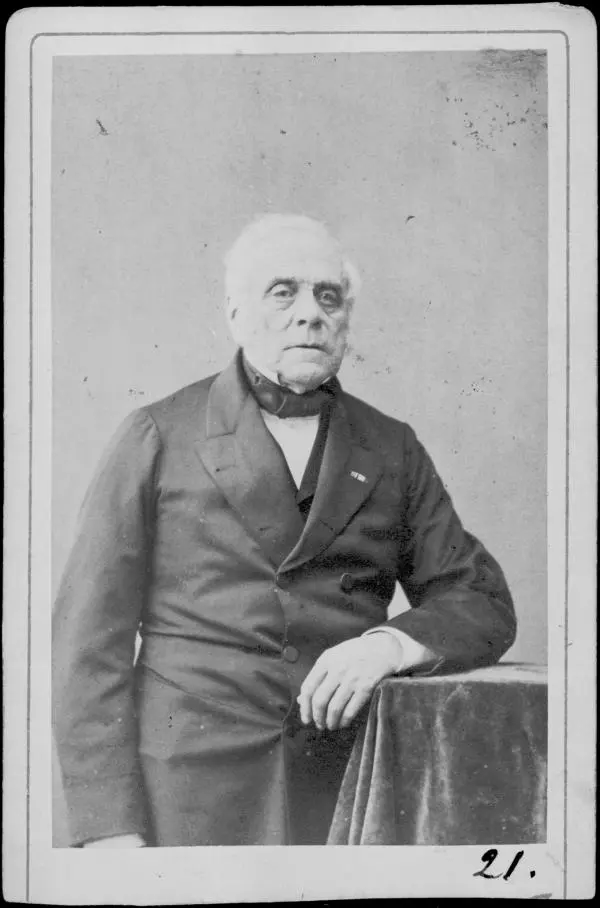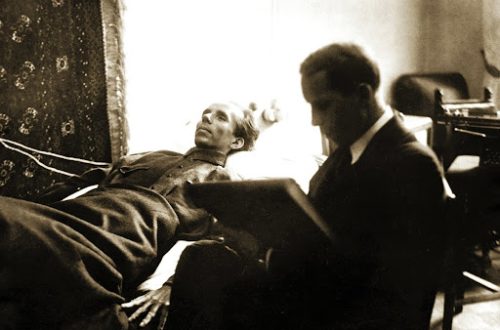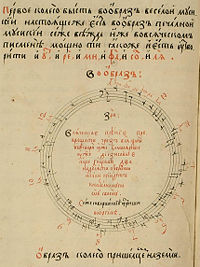
Daniel Francois Esprit Auber |
tirotiro
Daniel Auber
Opere. "Fra Diavolo". Ko Agnes taitamariki (N. Figner)
Mema o te Institute of France (1829). I a ia e tamariki ana, i whakatangihia e ia te violin, i tito i nga korero aroha (i taia). Ko nga hiahia o ona matua, nana nei ia i whakarite mo te mahi arumoni, i whakapau kaha ia ki te waiata. Ko tana wheako tuatahi, he runaruna tonu, i roto i nga puoro whakaari ko te opera komeke Iulia (1811), i whakaaetia e L. Cherubini (i raro i tana tohutohu, i ako a Aubert i te titonga).
Ko nga mahi whakaari tuatahi a Aubert, ko The Soldiers at Rest (1813) me te Testament (1819), kaore i whakawhiwhia. I kawea mai e te Rongonui ki a ia te opera kome Te Shepherdess – te rangatira o te whare rangatira (1820). Mai i te 20s. I timata a Aubert i te mahi tahi mo te wa roa me te kaitito whakaari a E. Scribe, te kaituhi o te pukapuka o te nuinga o ana opera (ko te tuatahi ko Leicester me Snow).
I te timatanga o tana mahi, i awe a Aubert e G. Rossini me A. Boildieu, engari ko te opera comic The Mason (1825) e whakaatu ana i te mana motuhake me te taketake o te kaitito. I te tau 1828, ko te opera The Mute from Portici (Fnella, lib. Scribe me J. Delavigne), i whakapumau i tona rongonui, i whakaaria me te angitu angitu. I te tau 1842-71 ko Aubert te kaiwhakahaere o te Paris Conservatoire, mai i te tau 1857 ko ia ano te kaitito waiata.
Ko Ober, me J. Meyerbeer, tetahi o nga kaihanga o te momo opera nui. Ko te opera The Mute from Portici no tenei momo. Ko tana kaupapa - ko te whakaohooho o nga kairanga ika Neapolitan i te tau 1647 ki nga taurekareka o Paniora - i rite ki te ahua o te iwi i te ahiahi o te Huringa Huringa o 1830 i Parani. I runga i tana kaupapa, i whakautu te opera ki nga hiahia o te hunga matatau, i etahi wa ka puta he mahi hurihuri (he whakaaturanga patriotic i te whakaaturanga i te tau 1830 i Brussels i noho hei timatanga o te whakaohooho i puta ai te whakaoranga o Belgium mai i te mana o Tatimana). I Ruhia, ko te mahi o te opera i roto i te reo Ruhia i whakaaetia e te rangatira o te tsarist i raro i te taitara Ko te Palermo Bandits (1857).
Koinei te opera nui tuatahi i ahu mai i runga i nga korero o mua, ko nga ahuatanga ehara i nga toa tawhito, engari he tangata noa. Ka whakamaoritia e Aubert te kaupapa toa na roto i nga tangihanga o nga waiata a te iwi, nga kanikani, tae atu ki nga waiata whawhai me nga hikoi o te Huringa Nui o Wīwī. Ka whakamahia e te opera nga tikanga o te rerekee i nga mahi whakaari, te maha o nga kaiwaiata, te momo papatipu me nga ahuatanga toa (i runga i te maakete, whakaohooho), nga ahuatanga o te waiata (te ahua o te haurangi). Ko te mahi a te wahine toa i whakawhiwhia ki tetahi poi poipoi, na te kaitito waiata i tuku ki te whakakii i te whika ki nga wahanga oriori e whakaatu ana i te taha o te whakaari atamira a Fenella, me te whakauru i nga huānga o te ballet whai hua ki roto i te opera. Ko te opera Ko te Wahangu mai i Portici i whai paanga ki te whanaketanga ake o te opera tangata-toa me te aroha.
Ko Aubert te māngai nui rawa atu o te opera puoro French. Ko tana opera Fra Diavolo (1830) i tohu he waahi hou i roto i te hitori o tenei momo. I roto i te maha o nga puoro puoro e tu mai ana: "Te Hoiho Bronze" (1835), "Black Domino" (1837), "Diamonds of the Crown" (1841). I whakawhirinaki atu a Aubert ki nga tikanga a nga rangatira o te opera puoro French o te rautau 18. (FA Philidor, PA Monsigny, AEM Gretry), me tana pakeke ake a Boildieu, i ako nui mai i te toi o Rossini.
I te mahi tahi me te Scribe, i hangaia e Aubert tetahi momo opera opera hou, e tohuhia ana e te rikarika me te rikarika, i etahi wa ko nga korero pakiwaitara, he mea hanga noa, he tere te whakawhanake i nga mahi, ki tonu i nga ahuatanga whakamīharo, takaro, i etahi wa kee.
He maamaa te puoro a Aubert, e whakaata ana i nga huringa pukuhohe o te mahi, ki tonu i te ngawari, te ataahua, te ngahau me te kanapa. Kei roto i nga reo o te waiata French o ia ra (waiata me te kanikani). Ko ana tohu e tohuhia ana e te hou o te waiata me te momo, te koi, te manawataki piquant, me te nuinga o nga wa ka ngawari te hangai me te hihiri. I whakamahia e Aubert te tini o nga momo waiata me nga momo waiata, he tino mohio ki te whakauru i nga roopu me nga kaiwaiata, i whakamaoritia e ia i roto i te mahi takaro, whai hua, te hanga i nga momo ahua ora, karakara. I whakakotahihia te hua auaha i Aubert me te koha o te momo me te mea hou. I hoatu e AN Serov he aromatawai nui, he korero marama ki te kaitito. Ko nga opera pai a Aubert kua mau tonu te rongonui.
EF Bronfin
Ngā tito:
opera – Julia (Julie, 1811, he whare tapere motuhake i roto i te whare tapere o Chime), Jean de Couvain (Jean de Couvain, 1812, ibid.), Te ope hoia e okioki ana (Le séjour militaire, 1813, Feydeau Theatre, Paris), Testament, Ko nga korero aroha ranei (Le testament ou Les billets doux, 1819, Opera Comic Theatre, Paris), Shepherdess – te rangatira o te whare rangatira (La bergère châtelaine, 1820, ibid.), Emma, he kupu whakaari kore ranei (Emma ou La promesse imprudente, 1821, ibid. same), Leicester (1823, ibid.), Snow (La neige, 1823, ibid.), Vendôme i Spain (Vendôme en Espagne, me P. Herold, 1823, King's Academy of Music and Kanikani, Paris) , Konohete Kooti (Le concert à la cour, ou La débutante, 1824, Opera Comic Theatre, Paris), Leocadia (Léocadie, 1824, ibid.), Bricklayer (Le maçon, 1825, ibid.), Shy ( Le timide , ou Le nouveau séducteur, 1825, ibid.), Fiorella (Fiorella, 1825, ibid.), Mute from Portici (La muette de Portici, 1828, King's Academy of Music and Dance, Paris), Bride (La fiancée, 1829, Opéra Comique, Paris), Fra D iavolo (F ra Diavolo, ou L'hôtellerie de Terracine, 1830, ibid.), Te Atua me Bayadère (Le dieu et la bayadère, ou La courtisane amoureuse, 1830, King. Academy of Music and Dance, Paris; ko te mahi a te bayadère wahangu isp. ballerina M. Taglioni), Love potion (Le philtre, 1831, ibid.), Marquise de Brenvilliers (La marquise de Brinvilliers, me etahi atu kaitito 8, 1831, Opera Comic Theatre, Paris), Oath (Le serment , ou Les faux -monnayeurs, 1832, King's Academy of Music and Dance, Paris), Gustav III, or Masquerade Ball (Gustave III, ou Le bal masqué, 1833, ibid.), Lestocq, ou L' intrigue et l'amour, 1834, Opera Comic, Paris), Te Hoiho Bronze (Le cheval de bronze, 1835, ibid; i te tau 1857 i mahi ano hei opera nui), Acteon (Actéon, 1836, ibid), White Hoods (Les chaperons blancs, 1836, ibid.), Envoy (L'ambassadrice, 1836, ibid.), Black Domino (Le domino noir, 1837, ibid.), Fairy Lake (Le lac des fées, 1839, King's Academy Music and Dance”, Paris), Zanetta (Zanetta, ou Jouer avec le feu, 1840, Opera Comic Theatre, Paris), Taimana Karauna (Les diamants de la couronne, 1841, ibid.), Tiuka o Olonne (Le duc d 'Olonne, 1842, ibid.), Te Tiri o te Rewera (La part. du diable, 1843, ibid.), Siren (La sirène, 1844,ibid.), Barcarolle, or Love and Music (La barcarolle ou L'amour et la musique, 1845, ibid.), Haydée (Haydée, ou Le secret, 1847, ibid.), Prodigal son (L'enfant prodigue, 1850) , Kingi. Academy of Music and Dance, Paris), Zerlina (Zerline ou La corbeille d'oranges, 1851, ibid), Marco Spada (Marco Spada, 1852, Opera Comic Theatre, Paris; i te tau 1857 i whakahouhia hei paera), Jenny Bell (Jenny Bell , 1855, ibid.), Manon Lescaut (Manon Lescaut, 1856, ibid.), Circassian woman (La circassienne, 1861, ibid.), Bride of King de Garbe (La fiancée du roi de Garbe, 1864, ibid.) ) , Te Ra Tuatahi o te Harikoa (Le premier jour de bonheur, 1868, ibid.), Moemoea o te Aroha (Rêve d'amour, 1869, ibid.); aho. whawha (kaore i panuitia), etc.





